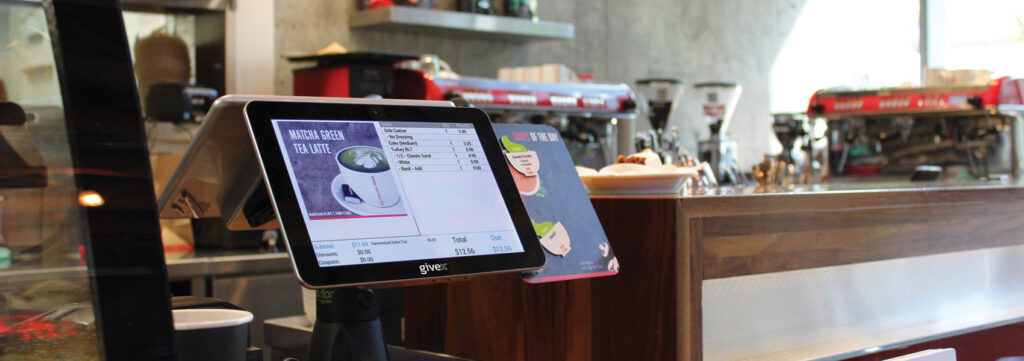
8.18.2021
Since joining Givex in 2007, Mo Chaar has helped the company expand its North American footprint. He began his tenure as a Business Development Manager before becoming Vice President of Sales for North America, and then moved to his current role of Chief Commercial Officer. In this role, Chaar oversees commercial strategy and development worldwide as well as managing the sales teams within North America. His experience in gift card, loyalty and POS has played a pivotal role in the success of some of Givex’s largest partners. As Givex continues to expand on a global level, with a wide array of product offerings, there is a need to keep the teams aligned on pricing, product and sales approach. As the CCO, Chaar continues to manage the North American Sales and Corporate Account Management teams and also takes on the added duties of supporting the Global Managing Directors in ensuring that all functions of the organization are aligned to meet our strategic commercial objectives. In the following interview, Chaar shares his perspective on how restaurants can utilize next-generation technologies to thrive in the new normal operating environment.
How can restaurants leverage technology to better adapt to the COVID-19 restaurant landscape?
COVID-19-induced restaurant shutdowns have made the online ordering landscape more competitive than ever. Restaurants were forced to pivot to online ordering and takeout service in an attempt to make ends meet and, as a result, many restaurants outsourced their online ordering and delivery capabilities to costly third-party providers. Now, it has become clear that off-premise dining is a trend that’s here to stay, even post-COVID, and restaurants would benefit from incentivizing direct online orders in order to cut back on third-party fees. Loyalty programs and other customer rewards programs are a great way to encourage direct orders and restaurants can leverage data gathered from their POS system to inform a thoughtful rewards program that resonates with customers.
Additionally, with safety always a top priority, POS technology can be used to create streamlined seating charts to maximize the flow and efficiency of the restaurant without overcrowding. Data from POS reports can also be leveraged in a wide variety of ways: from decreasing the need for front-of-house workers in order to promote social distancing and recover from the COVID hiring crisis to streamlining online ordering processes and providing restaurant owners with a top-level view of costs and inefficiencies that can then be adjusted in order to offset rising food costs and other challenges.

Why is implementing technology in the restaurant industry important, especially in a post-pandemic world ?
Now more than ever, as the restaurant industry faces a hiring crisis, technology has the ability to play a huge role in filling the gap in qualified candidates and server shortages. Point of sale technology allows restaurants to streamline efficiencies and function effectively without a large number of front-of-house workers, helping restaurants to maximize revenue whenever possible.
Additionally, bolstered by the support and efficiency of POS technology, restaurants are able to hire less skilled and less experienced workers for some roles, thereby opening the hiring pool to include a larger number of potential candidates. In a post-pandemic world, automated restaurants are likely to become more and more popular: they are optimal for employee and customer safety and can run with minimal staff.
For example, Box’d, a fully-automated Middle Eastern restaurant in Canada, uses Givex technology to allow customers to order directly from their phones, computers or an in-store kiosk, sending their order directly to the kitchen before it is then delivered to a glass cubby that the customer can access to receive their freshly prepared, sealed meal, ready to grab and go. The restaurant’s suite of technology solutions helps to ensure minimal waiting while offering fresh food and convenience, perfect for today’s post-pandemic landscape.

What is your perspective on how the restaurant industry is evolving?
As the effects of the pandemic continue to play out, the restaurant industry is forever changed and will only continue to evolve. First, online ordering is no longer a helpful amenity that restaurants can choose to offer to their customers. Rather, it has become an essential component of any restaurant’s success. Off-premise sales saw a huge spike during COVID as restaurants were forced to close for indoor dining, and this trend towards takeout and delivery is likely here to stay. As a result, restaurants need to make sure that they are armed with the right POS system in order to effectively integrate their system with their preferred delivery platforms to streamline online orders and avoid common mistakes like missed orders or double entries.
Additionally, increased technology in restaurants will only continue to become more prevalent and visible. QR codes were on the rise throughout the pandemic as a way to avoid printed menus and tighten safety measures. Now, even as restaurants begin to reopen for indoor and outdoor dining, QR codes are often used for restaurant check-ins and continue to remain as a safer alternative to individual menus, especially in fast casual restaurant concepts. Fully-automated restaurant concepts, like Box’d, will also continue to crop up in response to the hiring crisis, in addition to ghost kitchens. Ghost kitchens function solely as a kitchen for takeout and delivery orders, allowing restaurants of all sizes to fit into smaller retail footprints.

